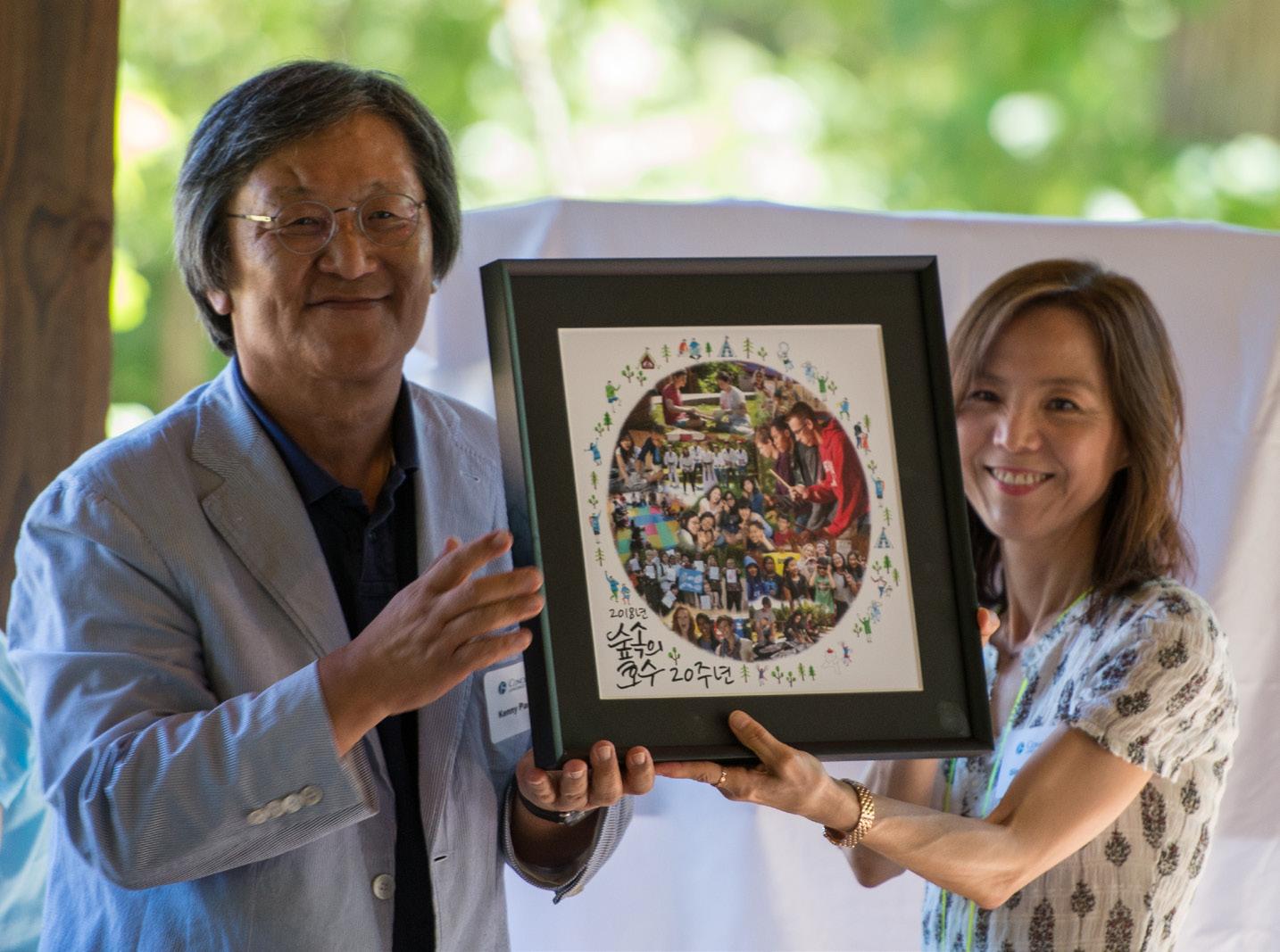




Kenny and Simone Park and the Simone Corporation (Seoul, Korea) provided a lead gift of $5 million to Concordia Language Villages to initiate the first phase of construction of the Korean Language Village on Turtle River Lake, near Bemidji, Minn. This is the largest single gift to the Villages in its 63-year history.
Phase one of the capital project is now complete with the construction of the dining center with commercial kitchen, administrative complex, two villager residences, soccer field and waterfront area. The second phase consists of additional villager residences and a cultural activities center situated around a central plaza, a sports activity center with a traditional Korean archery range and a Hanok-style pavilion at the lakefront’s edge. The second phase of construction is estimated to be in a range of $7 million to $8 million.












I believe that one of the best gifts for young people is providing access and motivation for them to learn and experience global cultures. And I consider the Korean Language Village to be a perfect model of how best to create global citizens.
Kenny Park CEO, Simone Corporation





The traditional Korean house, known as a hanok , is a solid one-level construction made of stone, wood and earth. Designed to be a part of its natural surroundings, a masterfullyconstructed hanok can last for centuries, ventilated by careful arrangement and an astute understanding of wind flow. Sturdy, regularly placed posts support the weight of the structure, allowing a series of screen doors to shift into rooms that expand and contract in size according to need. It has been said that a hanok is a house that breathes, and that those who dwell here become a part of nature.
Although Korean architecture has changed to incorporate the conveniences of modern life, the geometric shapes and angles of the classical hanok , as well as the emphasis on harmony with nature, continue to occupy an important role in contemporary Korean design. The new Sup sogŭi Hosu site similarly reflects the bridging between traditional aesthetics and modern-day functionality. Archigroup MA (Seoul, Korea) is the architectural firm that creatively incorporated all these authentic elements to provide the vision for constructing a Korean Language Village in the North Woods of Minnesota.






The year 2023 marked the 70-year milestone of the Republic of Korea – United States alliance that began during the Korean War. American soldiers who served during the conflict were disproportionately represented by individuals from Minnesota, chosen specifically for their hearty ability to endure similar, harsh winter conditions. The Han-Mi Commons is located in the center of the Korean Language Village to honor the memory of those who served to protect and rebuild the nation of Korea and to acknowledge the close relations between Korea and both the United States and Minnesota. In the heart of the Village, the Han-Mi Commons serves as the central hub of all immersion learning and cultural activities that are offered throughout the day at Sup sogŭi Hosu This space allows for simultaneous, multifunctional small-group activities as well as large-scale performances and all-Village activities.



A program of CLV@cord.edu | (800) 222-4750
ConcordiaLanguageVillages.org
For 25 years, Sup sogŭi Hosu, “the world’s one and only Korean Language Village,” has attracted more than 2,500 students aged 7 to 18 from across the United States and from a number of other countries. Sup sogŭi Hosu offers one-, two- and fourweek sessions, incorporating all levels of language proficiency from beginners to advanced speakers. The four-week session is the equivalent of one year of high school language instruction and attracts up to 40 students each summer.

Sup sogŭi Hosu is run by distinguished professionals in the fields of Korean Studies and Korean language education. The Village Founder and Dean Emeritus, Dr. Ross King of the University of British Columbia, is an internationally recognized expert in Korean language and literature. The current Village Dean, Dr. Dafna Zur, is Associate Professor of East Asian Languages and Cultures at Stanford University. She has been on staff for 20 years at the Korean Language Village, with the last 12 years as dean.